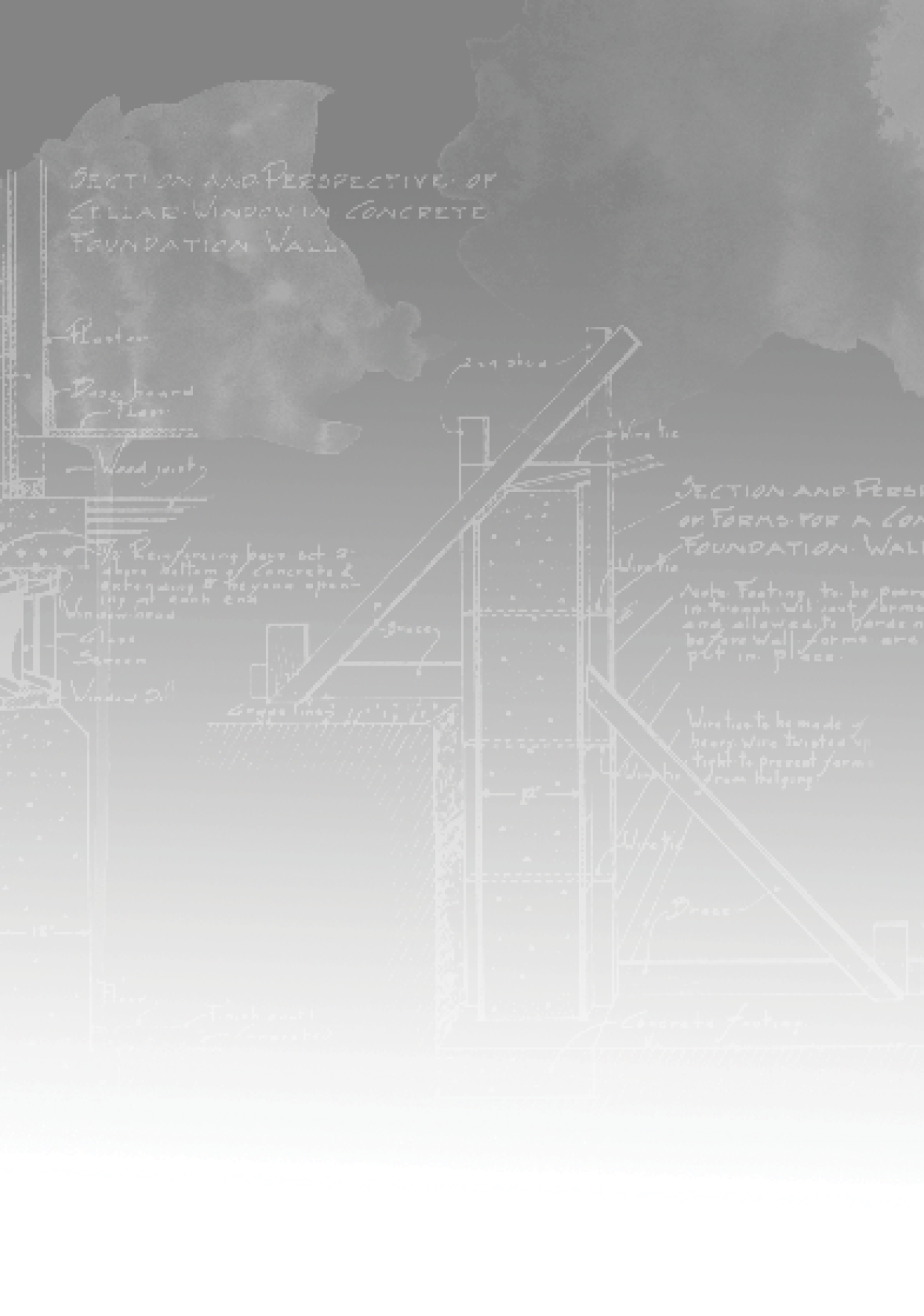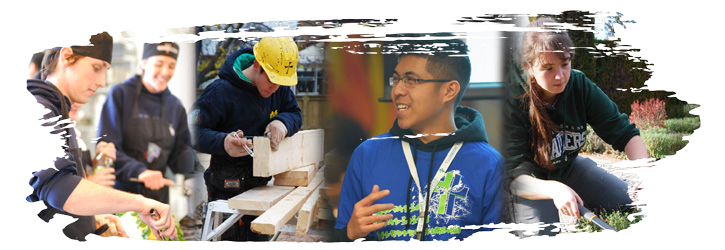What is an SHSM?
The Specialist High Skills Major (SHSM) program, which is part of the Ministry of Education’s Student Success initiative in the province of Ontario, has been introduced to offer province-wide specialized programs in specific ministry-identified sectors to support the success of all students. Ontario secondary schools are offering expanded programs to help meet students’ individual learning styles and interests. These options include Dual Credits, Specialist High Skills Majors and Cooperative Education. These programs help to meet the needs, interests and strengths of all students, engaging them in learning and better preparing them for graduation and beyond.
Students who choose an SHSM designation learn through co-operative education and experiential learning placement within the community. Students who complete an SHSM designation can be confident when they leave high school that they are equipped with the knowledge, skills, and industry-recognized qualifications desired by employers and post-secondary institutions. Niagara Catholic is proud to be partnered with many local businesses and agencies within the Niagara Region to offer its students rich and diverse opportunities to gain practical experience and expertise in their chosen career fields.
Core Components
•Bundled Credits: Each SHSM program offers students a bundle of 8-10 Grade 11 and Grade 12 credits. The credits include: 4 “major” credits
in their area of interest, English and Mathematics, other elective courses in Science, Business or Social Sciences that are designed to complement the major courses, and at least 2 co-op courses related to their SHSM.
•Sector-Recognized Certifications: Related to the major and selected from a list, both generic and specific to support the sector (i.e. WHMIS, First Aid, Fall Arrest).
•Experiential Learning Opportunities: Which includes: Job-shadowing, job-twinning, work experience, cooperative education, field trips and other workplace experiences for students to explore careers related to that sector.
•Reach Ahead Experiences: In the field and sectors considered as a post-secondary destination, ranging from a few hours to full courses (e.g. Dual Credit program).
What advantages do SHSM students have?
• HEAR and SEE …first-hand what a career in their sector feels and looks like
• NETWORK… with post-secondary institutions, local industries, and businesses
• GAIN… confidence in their ability to succeed
• COMPLETE… industry recognized certifications and training
• OPEN… doors for summer jobs and future employment
• EARN…a Red Seal designation on their OSSD
What does the Red Seal mean?
• Employers and post-secondary institutions recognize that a student has participated in specialized, career focused programming.
• SHSM students receive an additional transcript outlining their accomplishments.

Can I register to be a SHSM student even if I am doubtful that I will complete all the required components?
• Yes, if you are interested in a possible career related to a SHSM sector, you can register for that SHSM.
• Even if you do not complete all the components of the SHSM, you will still benefit from certification training, field trips and other learning experiences related to the SHSM. You will also receive a summary of all your completed SHSM components when you graduate.
I am in grade 12. I have not taken some of the grade 11 courses specified in the SHSM pathway chart. Can I still get my SHSM designation?
• You will not get your SHSM designation until you have completed ALL the courses in the SHSM pathway chart both in grade 11 and grade
12. You can speak to your guidance counsellor for more information.
Can I return for an additional term and complete my SHSM after I graduate?
• Yes, you can complete your SHSM any time after you graduate.
• Upon completion of the required components, you will receive an official SHSM summary sheet showing that you completed the SHSM.
I am a university-bound student who needs specific courses. How can I fit a co-op course in my timetable?
You have several options: after school co-op, summer co-op, or you can take a grade 11 SHSM major course during grade 10. This will leave two credits open for co-op in grade 12.
How are SHSM students at an advantage in their application to University?
Many post-secondary applications to University have opportunities for supplemental applications. There are programs that traditionally require portfolios and/or interviews. Many of these are in the
Arts which would be an advantage for the Arts and Culture SHSM. Some programs in Radio and Broadcasting, Communications, Journalism, Business and Architecture also require supplemental information.
What if after starting the program the student decides this is not for them?
• All credits earned in an SHSM program count towards the completion of a standard OSSD.
• Any certifications or training gained will hold students in good standing for part-time jobs or work placements.
• Co-op is a valuable experience, allowing a student to discover what they like doing and just as importantly, what they don’t like doing.
Testimonials
SHSM helps prepare me...
“...by doing good projects and showing me what can happen from mistakes.”
- Zach, Horticulture and Landscaping
“...by teaching me how to do real life applications within the Energy sector.” - Quinten, Energy
“...because this program has given me a new outlook on the world of Business and I am happy to have been a part of the journey.”
- Nicole, Business
“...for the real world by giving me the opportunity to do what I want in the future and learn the ‘tricks of the trade’.”
- Carson, Construction
“...by allowing me to cover all the skills and classes that will assist me in following my career path in Horticulture. The program has given me a huge advantage that other students may not receive.”
“...for the real demand that I will encounter from customers in the industry.”
- Angela, Transportation Technology
“...by putting me into a real art occupation with the co-op, and enhancing my learning and skills for my future education and career.”
-Shane ,Arts and Culture
- Dacia, Horticulture and Landscaping “...by giving me industry recognized certifications that will add to my resume.”
- Leanne, Environment
“...by teaching me hands on skills that I will definitely need when I get out of high school, and preparing me for the workplace.” - Jacob, Construction

Arts & Culture
Arts & Culture
An Arts & Culture education challenges people to think critically and to solve problems creatively – skills that are now in high demand. Depending on local circumstances, this SHSM may be designed to have a particular focus – for example, on dance, dramatic arts management, or technical production.
Possible Occupations:
• Entertainment Industry Power Technician
• Painter/decorator
• Actor/comedian
• Animator – Graphic Design and Illustration
• Interior Designer
• Author / Writer
• Dancer
• Visual Artist
• Public Relations and Communications
• Musician / Singer
• Theatre Fashion
• Cosmetology


BUSINESS
Business
The Business sector, the central pillar of Canada’s economy, is bursting with opportunities, from positions as accountants and clerks to administrators and retailers. Because of globalization and new technology, the business sector also offers opportunities to young entrepreneurs to aim at the international market. Depending on local circumstances, this SHSM may be designed to have a particular focus – for example, on entrepreneurship, finance, accounting, retail, marketing, international business, economics, management and administration, or event planning.
Possible Occupations:
• Conference and Event Planner
• Insurance Adjuster and Claims Examiner
• Legal Secretary
• Purchasing Agent and Officer
• Retail and Wholesale Buyer
• Human Resources
• Economist and Economic Policy Researcher and Analyst
• Financial and Investment Analyst
• Mathematician, Statistician, and Actuary
• Accounting/Financial
• Financial Auditor
• Real Estate
• Retail Salesperson / Sales Clerk



CONSTRUCTION TECHNOLOGY
Construction
According to the Ontario Construction Secretariat, the construction industry is one of Ontario’s largest employers. The Construction Sector Council has creat-ed a province-by-province, trade-by-trade labour market forecast for the next nine years. In Ontario, it is estimated that 60,000 workers will be required to replace those retiring, who will take essential technical, supervisory, and man-agement skills with them. Furthermore, an additional 75,000 workers will be needed to fill positions related to new construction between 2009 and 2017. (Construction Sector Council, Careers in Construction, www.careersinconstruction.ca)
There are four categories of work in the construction industry. Depending on the career chosen, a graduate could work in any of these categories:
• new home building and renovation
• heavy industrial construction (i.e. building industrial facilities such as cement, automotive, chemical, or power plants, refineries, and oil-sands installations)
• institutional and commercial construction (i.e. building commercial and institutional buildings and structures such as stadiums, schools, hospitals, grain elevators, and swimming pools)
• civil engineering construction (i.e. engineering projects such as highways, dams, water and sewer lines, power and communication lines, and bridges.
Possible Occupations:
• Brick and Stone Mason
• Carpenter
• Electrician
• Plumber
• Civil Engineering Technologist
• Construction Estimator
• Home Inspector
• Interior Designer
• Residential Home Builder or Renovator
• Architect
• Electrical Engineer
• Structural Engineer
• Concrete Finisher
• Drywall Installer
• Heating and Air Conditioning Contractor

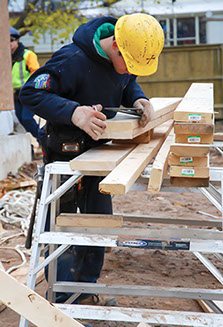

Energy
Energy
World demand for energy is projected to increase by 44 percent from 2006 to 2030. Canada plays an active role in producing and exporting energy. (U.S. Energy Information Administration, Independent Statistics and Analysis, International Energy Outlook 2009, www.eia.doe.gov/oiaf/oiaf/ieo/world. html)
Core industries in this sector include:
• renewable and alternative energy such as wind, solar, and biomass
• power generation and distribution
• fossil fuels
• energy efficiency
Career opportunities are abundant because of the aging energy workforce and increasing public demand for greener power sources. Students enrolled in the SHSM – Energy will be involved in today’s rapid and exciting changes in green energy technologies. They will have the opportunity to solve some of the most pressing issues facing modern societies while having good prospects for a varied career in a dynamic sector. Depending on local circumstances, the SHSM–Energy may be designed to have a particular focus – for example, on power generation and distribution, renewable and alternative energy, or energy efficiency.
Possible Occupations:
• Electrical Power Line and Cable Worker
• Construction Electrician
• Energuide and Quality Control Manager
• Geological and Mineral Technologist and Technician
• Geothermal Installer
• Geothermal System Designer
• Industrial Electrician
• Gas Fitter
• Petroleum, Gas, and Chemical Process Operator
• Steamfitter, Pipefitter, and Sprinkler System Installer
• Industrial Engineering Technician
• Natural and Applied Science Policy Researcher, Consultant, and Program Officer
• Climatologist
• Geological Engineer
• Physicist
• Home Energy Evaluator
• Renewable Energy Products Salesperson
• Solar Panel Chemical Process Technician
• Wind Turbine Material Controller



environment
Environment
Existing labour shortages in this sector are expected to increase as regulations to meet Canada’s goals regarding climate come into effect.
ECO Canada’s Profile of Canadian Environmental Employment 2007 defines environmental employment as work in at least one of these sectors of the economy:
• environmental protection
• conservation and preservation of natural resources
• environmental sustainability
Depending on local circumstances, the SHSM may be designed to have a particular focus – for example, on environmental science or environmental studies.
Possible Occupations:
• Arborist
• Biological Technologist or Biological Technician
• Conservation Officer or Fishery Officer
• Environmental Technician
• Forest Ecologist / Forestry Technologist/Technician
• Geological and Mineral Technologist
• Technician –Pollution Control
• Air Quality Meteorologist
• Environmental and Occupational Toxicologist
• Landscape Architects
• Urban and Land Use Planners
• Waste Diversion Consultant / Wastewater Treatment Plant Operator
• Hunting Guide
• Landscaping and Grounds Maintenance Workers
• Outdoor Sport and Recreation Guide

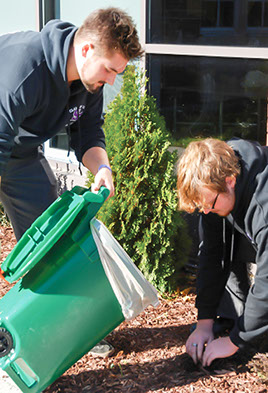

health & wellness
Health and Wellness
According to Canada’s Health Care System, published by Health Canada in 2005, “approximately 1.6 million people work in health care and social services in Canada”. The same publication states that this figure makes this sector “the nation’s third largest employer after manufacturing and the retail trade”. The demand for health and wellness professionals will only increase. One reason is that a large number of employees in the sector are nearing retirement age. A survey conducted in 2002 found that “12% of the total number of [Ontario’s] health care professionals … are over the age of 55.” (MEDIAFORCE Helpdesk, The Ontario Health Care Labour Market, http://testunix.mediaforce1.com/itp/LM%20Report/1%20HealthCareLabour.pdf.) In addition, as our population ages, the demands on the health care sector will rise. Depending on local circumstances, this SHSM may be designed to have a particular focus – for example, on health care, fitness, or child care and family services.
Possible Occupations:
• Kinesiologist
• Childcare worker
• Audiologist
• Fitness instructor / certified personal trainer
• Doctor / nurse
• Physiotherapist / Registered Message Therapist
• Youth care worker
• Hospital porter
• Medical technician
• Ambulance attendants and other paramedical occupations
• Dental hygienist or dental assistant
• Nutritionist / Dietitian
• Pharmacist
• Sports therapist
• Recreational Program Leader



HORTICULTURE & LANDSCAPING
Horticulture and Landscaping
Ornamental horticulture and landscaping is a multibillion-dollar industry offering thousands of full- and part-time employment opportunities in Ontario. The need for management of local parks and botanical/heritage gardens, maintenance of sports grounds, and construction of domestic gardens is growing, as is consumer demand for outdoor recreation, environmental sustainability, and eco-tourism. (Horticultural Trades Association, Landscape Ontario, www.horttrades.com)
Possible Occupations:
• Arborist / Tree Service Technician
• Horticultural Technician
• Golf Course Technician
• Landscape Technologist
• Parks Operations Manager
• Botanist
• Biologist
• Horticulturalist
• Landscape Architect
• Plant Pathologist
• Gardener
• Landscaping and Grounds Maintenance Contractors
• Lawn and Garden Retail Salesperson



HOSPITALITY & TOURISm
Hospitality and Tourism
The tourism industry is divided into five sub-sectors:
• Hospitality and tourism
• Accommodations
• Food and Beverage Services
• Recreation
• Travel Services
According to Statistics Canada, Tourism Satellite account: Human Resource Module 2009, the Hospitality and Tourism sector accounted for 1.6 million jobs, representing 9.4 per cent of the 17.1 million jobs in Canada. Between now and 2025, spending on tourism goods and services in Canada is expected to grow to $201 billion, and it is estimated that 219,000 tourism jobs will go unfilled due in part to declining birth rates and an aging workforce. (Canadian Tourism Human Resource Council, Fast Facts: Total Tourism Sector Employment (2006), http://cthrc.ca/en/research_publications/fast_facts.aspx)
Possible Occupations:
• Baker
• Butcher and Meat Cutter
• Chef
• Cook
• Special Events Coordinator
• Conference and Event Planner
• Hotel/Resort Manager
• Restaurant and Food Service Manager
• Travel Counselor
• Nutritionist
• Public and Environmental Health Officer
• Public Relations and Communications
• Food Stylist
• Executive Housekeeper
• Hotel/Front Desk Clerk
• Flight Attendant
• Tour and Travel Guide



INFORMATION & COMMUNICATION TECHNOLOGY
Information and Communications Technology
Information and Communications technology (ICT) is the sector that processes information (which includes capturing, transmitting, and displaying information) using electronic systems.
Core industries in this sector include:
• Communications systems (e.g., telecommunications, cable /broadband, broadcasting, and other program distribution systems)
• Computer systems (e.g., computer engineering, technical support, electronics, robotics,network engineering)
• Software and digital media (e.g., computer programming, computer and video games, simulations, computer animation, data management, web design, web portals, Internet security).
Any of the above areas may include a range of activities dealing with design and development, sales and marketing, security, training, and maintenance and repair. Depending on local circumstances, this SHSM may be designed to have a particular focus – for example, on communication systems, computer systems, or software and digital media.
Possible Occupations:
• Computer Network Technician
• Help Desk Technology Support Analyst
• Telecommunications Installation and Repair/ Network Cabling Specialist
• Audio and Video Recording Technician
• Broadcast Technician
• Electrical and Electronics Engineering Technologist and Technician
• Film and Video Camera Operator
• Graphic Designer, Illustrator, Animator
• Web Designer and Developer
• Computer Engineer
• Computer Programmer and Interactive Media Developer
• Information Systems Analyst
• Software Engineer and Designer
• Residential and Commercial Installer and Servicer – Satellite Dish Installer
• Telecommunications Cable Installer Helper and Splicer Helper



JUSTICE, COMMUNITY SAFETY & EMERGENCY SERVICES
Justice, Community Safety, & Emergency Services
The sector includes areas such as emergency services (e.g., police and fire services), emergency management, community safety administration (e.g., water testing), correctional services, security and private investigative services, animal welfare services, and the armed forces. With its low rates of unemployment (e.g., 0.4 per cent for police officers and firefighters) and high future retirement rates, this sector offers excellent prospects for employment. (Service Canada, Job Futures: World of Work, National Edition, 2007, p. 15, www.jobfutures.ca/en/brochure/JobFuture.pdf)
Events such as the 1998 ice storm, “Y2K”, September 11, 2001 (9/11), the SARS (severe acute respiratory syndrome) outbreak, and the August 2003 blackout have raised public and government recognition of this sector’s vital role in ensuring the safety of Ontarians. Ontario now has some of the most rigorous community safety legislation in North America, and since 9/11, governments, NGOs, and private enterprise have all greatly enhanced their efforts to ensure the public’s safety and security.
Possible Occupations:
• Police officer
• Firefighter
• Paralegal
• Soldier
• Emergency Manager
• Youth Worker / Correctional Officer
• Conservation Officer
• Border Services Officer
• 911 Dispatcher
• Lawyer
• Criminologist
• Disaster Relief Services Coordinator
• Military Officer
• Animal Control Officer
• Court Clerk / Court Services Officer
• Private Investigator
• Security Guard

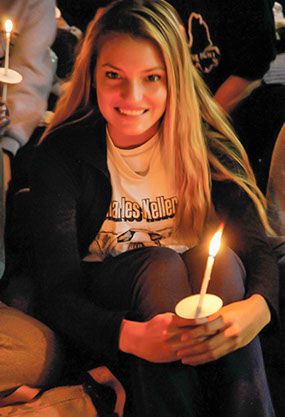

MANUFACTURING TECHNOLOGY
Manufacturing Technology
Automobiles, wood products, petroleum and coal products, iron and steel mills, primary metals and fabricated metal products, electricity, plastics and rubber products, printing, biotechnology, textiles, clothing, and leather products are all aspects of the manufacturing sector.
According to the Alliance of Sector Councils, the manufacturing sector is under tremendous pressure as a result of market-place globalization, an accelerated pace of technological change, and a global financial crisis. The alliance reports that manufacturers are now urgently refocusing their strategies to remain competitive and continue to be an important part of the Canadian economy. (The Alliance of Sector Councils, Manufacturing, www.councils.org/our-priorities/manufacturing)
The SHSM in manufacturing provides students with a strong foundation for a wide variety of careers in the manufacturing sector, from those focusing on the service, repair, and modification of vehicles and vehicle systems to those related to the organization and management of manufacturing services and mass-transit systems.
Possible Occupations:
• Die Designer
• Millwright – Industrial
• Mould Maker
• Precision Machinist
• Tool and Die Maker
• Welder
• Industrial Engineer / Technologist / Technician
• Manufacturing Engineer / Technician / Technologist
• Mechanical Engineering / Technologist
• Photonics Technologist and Technician
• Production and Quality Control Technologist
• Chemical Engineer
• Electrical Engineer
• Metallurgical Engineer
• Production Engineer
• Labourer, Material Handling
• Machine Operator, Metal Machining
• Motor Vehicle Assembler



NON PROFIT
Non Profit
According to a survey conducted by the HR Council for the Nonprofit Sector, it was found that nearly 1.2 million people in Canada perform paid work for non-profit organizations. This translates into more than 7 per cent of the Canadian workforce.
Employers include some 69,000 non-profit organizations nationwide. They are active in a variety of areas – health and social services, religion, development and housing, arts and culture, sports and recreation, the environment, education and research, fundraising, and law, advocacy, and politics – both in Canada and internationally. (HR Council for the Nonprofit Sector, Government of Canada’s Sector Council Program, http://hrcouncil.ca/home.cfm)
Possible Occupations:
• Conference and Event Planner
• Business Manager – Non-profit Organization
• Fundraising Consultant
• Community Social Development Officer
• Public Affairs Officer
• Social Policy Researcher Consultant and Program Officer
• Social Services Planner/Researcher
• Developmental Service Worker
• Festival Organizer
• Office Manager- Non-profit Organization



Sports
Sports
According to the Canada Foundation for Innovation, the Canadian sports sector generates around $8 billion a year.
According to Statistics Canada, Kids’ Sports, over half of all Canadian children are involved in organized sports, and 57 per cent of parents are involved in some way with sports, as participants, spectators, coaches, referees, sports administrators or organizers, or members of sports organizations. The number of adult Canadians involved in amateur sport as spectators reached 9.2 million in 2005. A 1997 survey reported that 59,300 Canadians were employed as coaches, trainers, referees and athletes. (Canadian Heritage, Organization of Sport in Canada: The Canadian Sport System, www.pch.gc.ca/pgm/sc/mssn/org-cdn-eng.cfm.)
Almost one in five Canadians aged 15 and older reported belonging to a club, a local community league, or a local or regional amateur sport organization. (Statistics Canada, Sport Participation in Canada, 2005, www.statcan.gc.ca/pub/81-595-m/81-595-m2008060-eng.pdf)
Whole sections of newspapers are dedicated to sport news, and many radio and television stations devote their programming to sports. Sports tourism produces revenues and employment.
Possible Occupations:
• Special Events Coordinator
• Arena Manager
• Broadcasting Sports Director
• Broadcast Technician
• Recreation Facility Manager
• Sports Agent
• Sports Announcers and Broadcasters
• Sports Photographer/Videographer
• Sports Photojournalist
• Technical and Coordinating Occupations in Sports Broadcasting
• Athletic Therapist
• Health and Physical Education Teacher
• Kinesiologist
• Athlete
• Coach
• Fitness/Sports Instructor

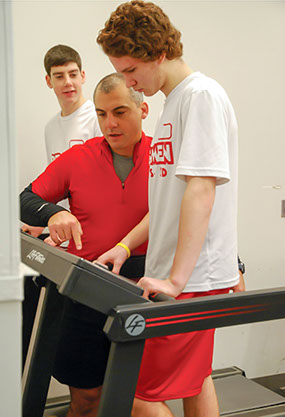

TRANSPORTATION TECHNOLOGY
Transportation Technology
Transportation affects our lives in a multitude of ways. We drive cars for everyday purposes, use mass transit to commute to work, and take flights and cruises on holidays. Transportation systems move raw materials to manufacturers and finished products to consumers – locally, nationally, and globally. It has been reported that the industry provided work for approximately 900,000 people in 2008 and that employment in this sector has grown steadily since 2000, reflecting a high demand for qualified personnel. (Transport Canada, Transportation in Canada 2008, An Overview, Addendum, www.tc.gc.ca/media/documents/policy/addendum.pdf.)
Possible Occupations:
• Auto Body Repairer
• Automotive Service Technician
• Marine Engine Mechanic
• Motorcycle Technician
• Parts Technician
• Recreation Vehicle Service Technician
• Small Engine Mechanic
• Truck and Coach Technician
• Air Pilot
• Mechanical Engineering Technologist
• Quality Control Assembly Inspector – Automotive/Marine Engines
• Aerospace Engineer
• Automotive Engineer
• Aircraft Assembler and Aircraft Assembly Inspector
• Automobile Salesperson
• Bus Driver, Subway Operator, and Other Transit Operator
• Heavy Equipment Operators (except Crane)
• Railway Track Maintenance Worker
• Service Station Attendant

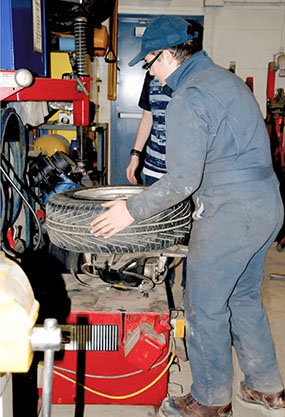

HOW TO PLAN FOR SHSM
Grade 8
• Investigate your interests and passions inside and outside of school
• Think about what you are good at
• Chat with friends and family members about their jobs
• Attend Grade 8 Information Nights to consult with teachers and counselors
Grade 9
• Enroll in courses that align your interests, skills, and academic abilities
• Consider courses that will broaden your experiences
• Discuss program options with teachers
• Consult with guidance counselors to ensure that you have
pre-requisite courses
Grade 10
• Explore opportunities in your Career Studies course
• Focus on what you want to try rather than puzzling over what you want to be
• Check out career exploration websites
• Begin the SHSM application process
Grade 11
• Begin SHSM programming
• Select appropriate Grade 12 SHSM courses
Grade 12
• Complete SHSM requirements for Red Seal
• Apply for post-secondary opportunities
Grade 12B
• Complete SHSM requirements for Record of Recognition
• Still have opportunity to earn SHSM
Please see your school Guidance Department for more information.

